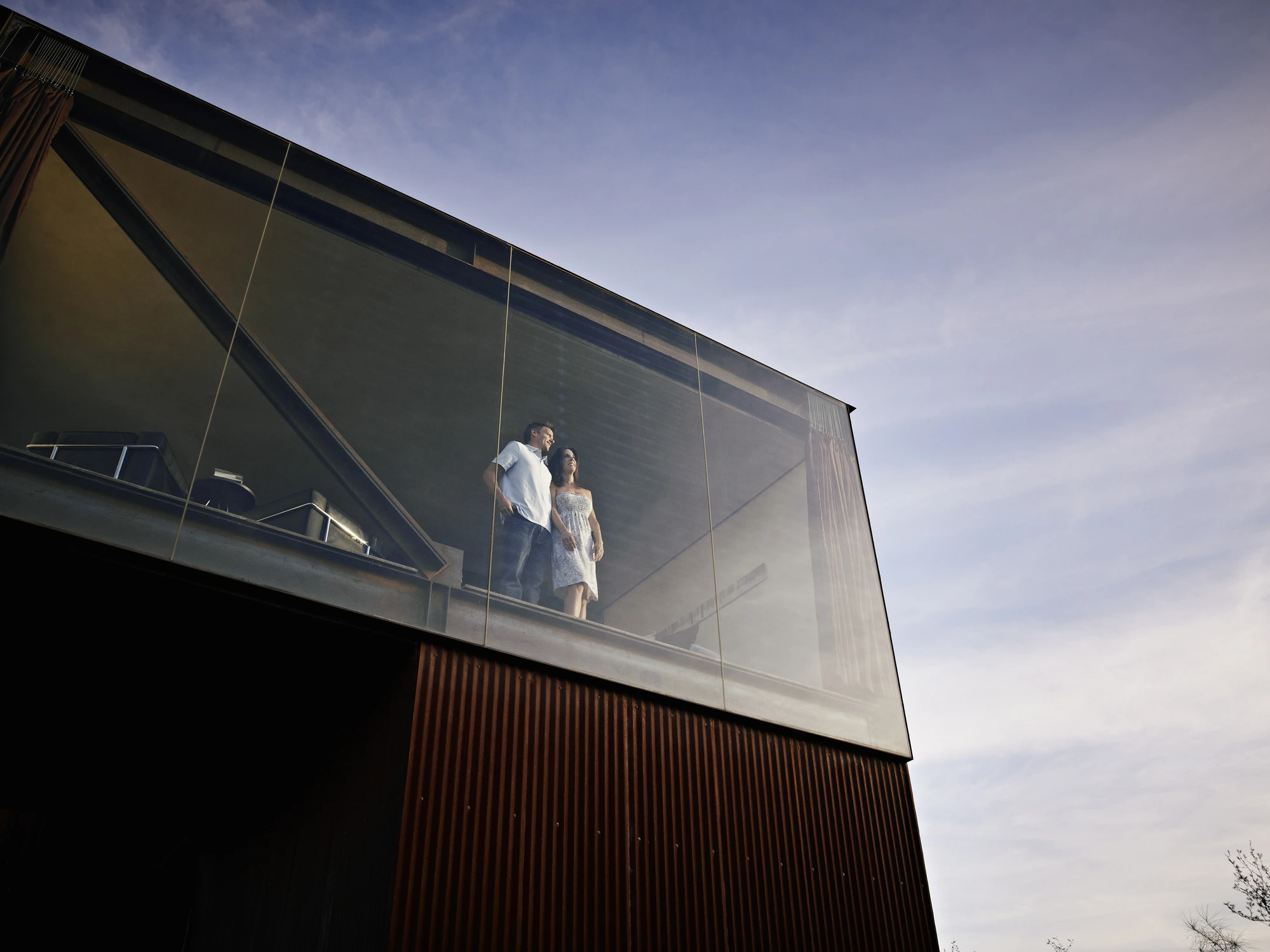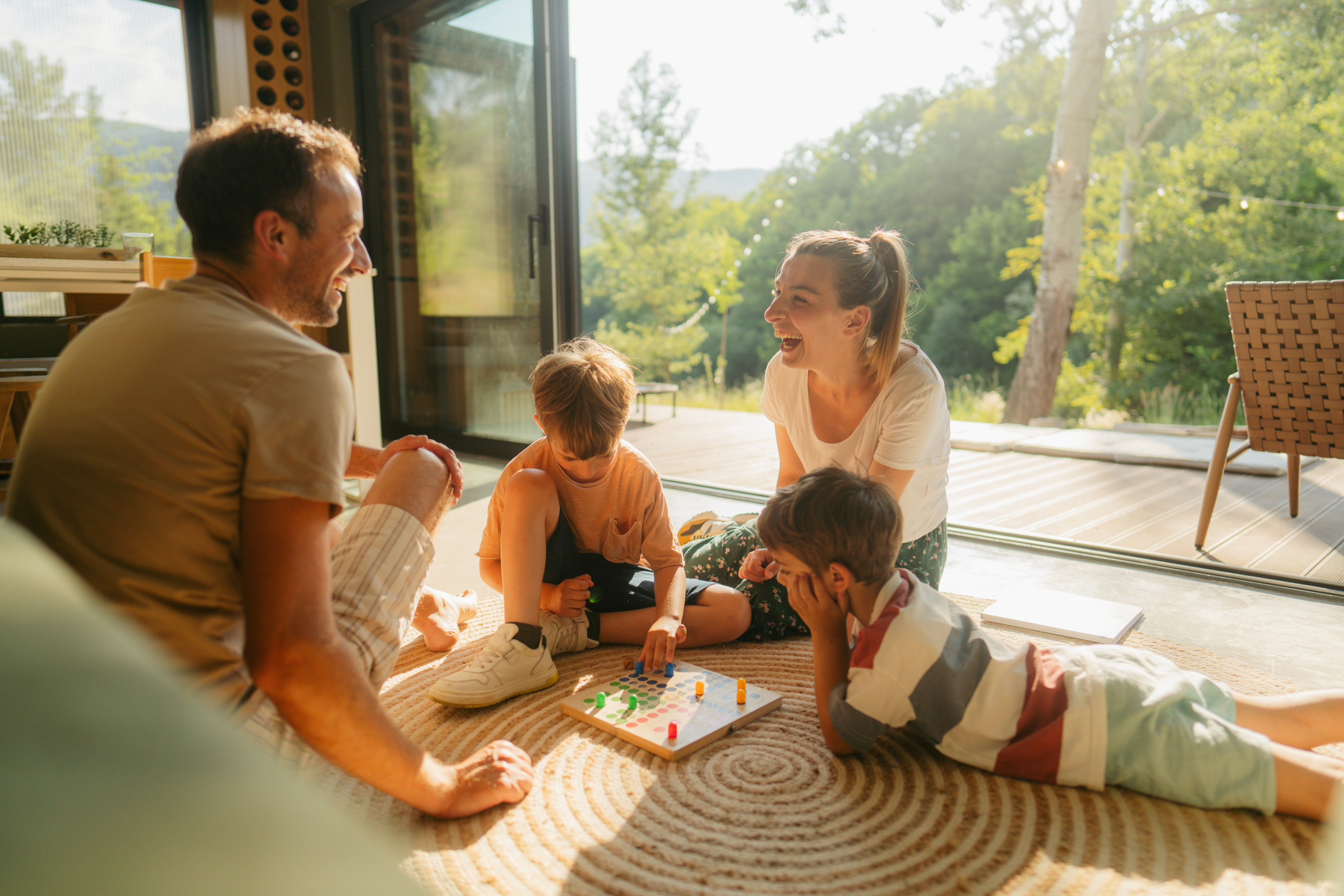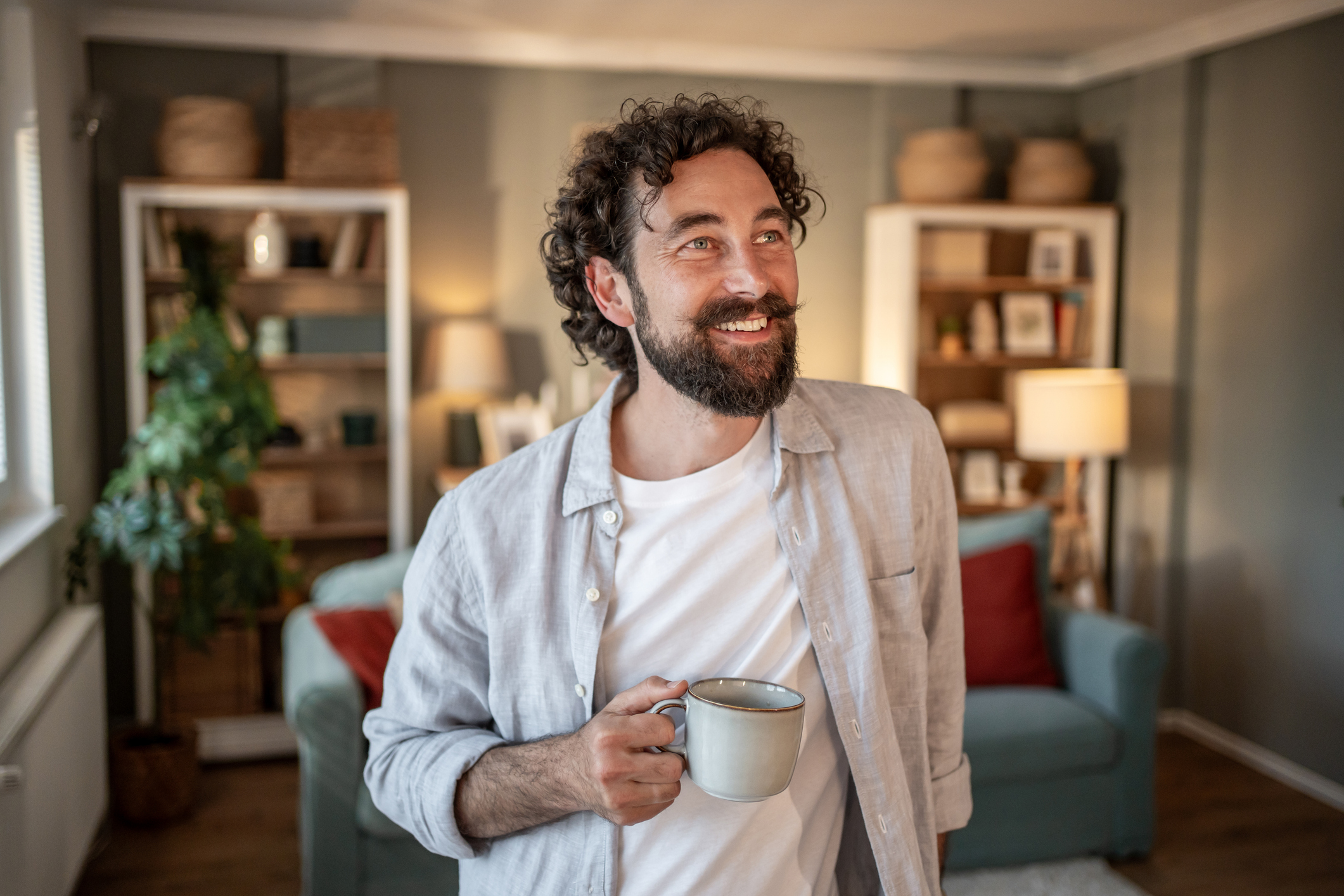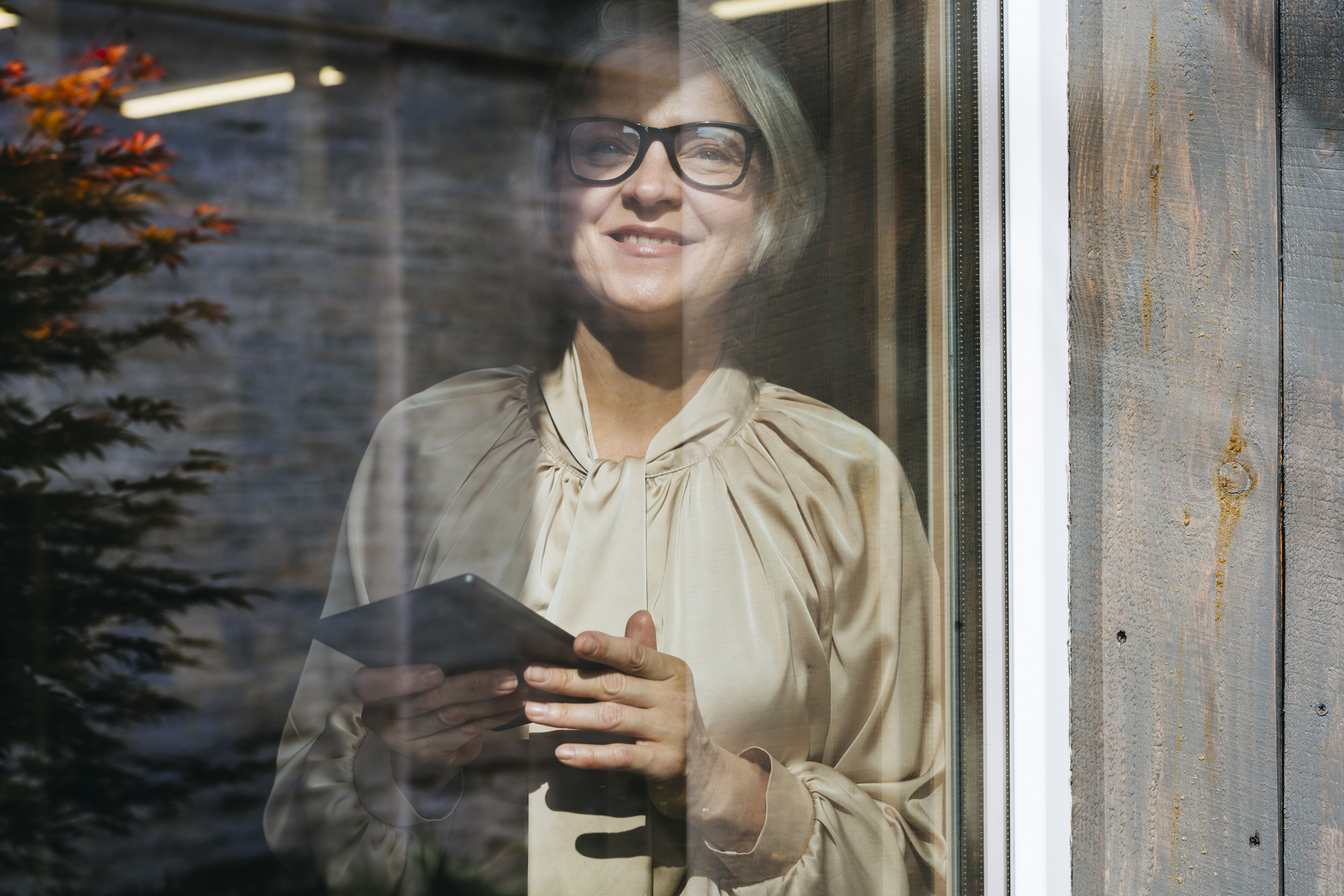July 2025
What Is A Passive House?
Learn what a Passive House is, how installing solar panels is one step towards Passive House homeownership, the pros and cons of building a Passive House, and much more.

A Passive House is built to use very little energy while keeping indoor temperatures steady all year round. It meets a recognised international standard that focuses on reducing heat loss through smart design choices like insulation, airtight materials, and energy-efficient ventilation.
These homes are designed to cut carbon emissions, lower energy bills, and create a comfortable living environment without relying heavily on heating or air conditioning. They work by keeping the warmth in during winter and the heat out during summer, all while maintaining clean, fresh air indoors.
What Are The Five Passive House Principles?
To meet the Passive House standard, a home must follow five key design principles. These work together to reduce energy use and create a consistent indoor climate that feels comfortable in all seasons.
1. High-Quality Insulation
Passive Houses are wrapped in thick layers of insulation. It’s used in the walls, roof and floor to reduce heat loss and keep the temperature stable inside. The aim is to achieve low U-values, which measure how easily heat passes through a material. The lower the number, the better the insulation.
2. Airtight Building Envelope
These homes are sealed tight. Every joint, seam and surface is carefully treated to stop warm air escaping and cold air getting in. The standard allows for no more than 0.6 air changes per hour, which is tested using a blower door. This level of airtightness helps to keep energy use low while reducing draughts and damp.
3. Triple-Glazed Windows And Doors
Windows and doors are a common weak spot in buildings, so Passive Houses use high-performance options with triple glazing and insulated frames. They’re positioned to make the most of the sun in colder months and reduce unwanted heat in summer. This helps regulate temperature naturally and improves comfort.
4. Mechanical Ventilation With Heat Recovery (MVHR)
Passive Houses are so airtight that they need mechanical ventilation to bring in fresh air. But rather than losing heat in the process, MVHR systems capture warmth from outgoing air and use it to preheat the incoming supply. This means fresh, filtered air all year round without wasting energy.
5. Thermal Bridge-Free Construction
A thermal bridge is a spot where heat can escape more easily, often at junctions or corners in the building. Passive House design avoids these weak points through smart detailing and consistent insulation. This helps prevent cold spots, reduces condensation, and keeps the home more energy efficient overall.
What Is The U-Value Of A Passive House?
U-values tell you how well a building material stops heat from passing through it. The lower the U-value, the better the material is at keeping warmth inside.
To meet Passive House standards, U-values usually need to fall within these ranges:
- Walls and roof: 0.10 to 0.15 W/m²K
- Floors: 0.10 to 0.15 W/m²K
- Windows: 0.60 to 0.80 W/m²K
For comparison, UK building regulations allow higher U-values, which means more heat is lost in a typical home. Passive House insulation goes further, reducing the need for heating and improving comfort at the same time.
Differences Between An Active House Vs Passive House
Both approaches focus on reducing energy use, but they take different routes. Passive House design starts with reducing energy demand as much as possible. Active Houses focus more on energy generation and using smart systems to balance energy input and output.
You can also combine the two. Adding solar panels to a Passive House, for example, can reduce your bills even further and bring you closer to net zero.
Thinking About Renewables? Start Here:
- How much energy do solar panels produce?
- Are solar panels suitable for your house?
- How long do solar panels last?
Benefits Of Passive House certification
Passive Houses offer real, measurable benefits to homeowners and the planet.
- Lower energy bills: Because these homes use so little energy, the savings add up quickly, especially during cold winters.
- Consistent comfort: No hot or cold spots. Just a steady indoor temperature all year round.
- Better air quality: MVHR systems continuously bring in filtered, fresh air. Great for allergy sufferers or those in built-up areas.
- Environmental impact: Lower energy use means lower carbon emissions.
- Long-term value: Certified Passive Houses may attract higher resale values as buyers become more energy-conscious.
Certification also gives you peace of mind. It confirms that your home meets strict, third-party-verified standards for efficiency and comfort.
Disadvantages Of A Passive House
There are plenty of upsides, but it's worth knowing the drawbacks too.
- Higher upfront costs: Materials, insulation, and specialist design work can be more expensive than standard construction.
- Design limitations: Not every existing building can be adapted easily. Retrofitting can be complex and may involve compromises.
- Specialist contractors: Not all builders are familiar with Passive House techniques, which can make the planning stage slower or more expensive.
- Ventilation dependency: Because the home is sealed tight, mechanical ventilation is essential. If it fails, it needs fixing fast.
That said, many of these challenges are easier to manage with expert support, especially during planning.
How To Heat A Passive House
Passive Houses are designed to use very little heating. In most cases, a small heat source like an electric panel, infrared unit or air-source heat pump is enough to warm the entire space.
Thanks to the airtight design and insulation, these systems only need to supplement the heat already retained inside. The sun, your body heat, and household appliances all contribute to warming the home naturally.
For those looking at renewables, solar panels and smart meters make excellent additions:
How Much Does A Passive House Cost?
Costs vary depending on whether you're starting from scratch or upgrading an existing home.
New-Build Passive House:
- Usually costs 5% to 15% more than a standard build, due to higher-spec materials and the need for specialist design. On average, passive house construction costs in the UK range from £1,500 to £3,000 per square metre.
- Upfront investment covers insulation, airtight windows and doors, and ventilation systems.
- Long-term energy savings often offset these costs within a few years — especially during colder winters.
Retrofit Projects:
- Retrofitting is often more complex and expensive due to the difficulty of upgrading existing walls, roofs, and floors to meet the Passive House standard.
- Full certification may not always be practical, but partial upgrades using the same principles can still cut energy use dramatically.
Passive House FAQs
Can You Turn A Normal House Into A Passive House?
Yes, through a process called EnerPHit, which applies Passive House standards to retrofits. It’s more flexible but still focused on reducing energy use.
Are Passive Houses Healthy?
Yes. They offer good air quality, low humidity, and stable temperatures. Great for respiratory health and comfort.
Can A Passive House Have A Fireplace?
You can, but it’s not typical. Most Passive Houses don’t need traditional fireplaces, and they must be sealed tightly to meet airtightness requirements.
Can You Open Windows In A Passive House?
Yes. You’re free to open windows, especially in warmer months. However, you don’t need to, as the ventilation system provides fresh air year-round.
Do Passive Houses Have Airtightness Requirements?
Yes. To be certified, a home must have no more than 0.6 air changes per hour under test conditions. That’s far tighter than standard homes.
Are Passive Houses Net Zero?
Not by default. But with solar panels, smart meters, and efficient appliances, Passive Houses can easily become part of a net-zero lifestyle.
What Are The Potential Passive House Energy Savings?
Many owners see heating demand reduced by up to 95% compared to conventional homes. That can mean hundreds of pounds saved every year.
Final Thought
Passive Houses are more than just eco-builds; they’re smart, future-ready homes that put comfort and efficiency first. Whether you’re planning a new build or upgrading your current home, using Passive House principles is a powerful way to cut energy use, reduce your carbon footprint and live more sustainably.








